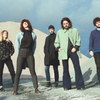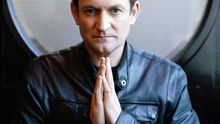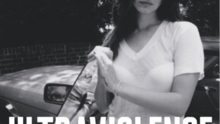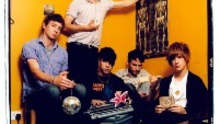The glory of it all, of course, was that none of this needed to happen. “The hacienda must be built” was the mantra, a Situationist quote from Ivan Chtcheglov refashioned by Tony Wilson to lend the project an additional veneer of counter-culture chic. But the Haçienda didn’t need building. Peter Hook supposedly once ventured that New Order would have been better off if they’d given ten quid to everyone who ever came to the club and sent them on their way; by all accounts, it was a financial disaster, tentatively propped up for most of its lifespan by the band’s record sales. Not that it matters now. “Some people make money,” Wilson observed at the time. “Others make history.”
When Paul Gill and Ste Pickford first started trying to get into the Haçienda as teenagers, they had no designs on either. “We’d roll up there, absolutely steaming drunk, and we were turned away by the bouncers every single time,” Ste remembers. “‘Not tonight lads, piss off.’ So we’d try again the next week.” One night, it seems, the bouncers took pity on them, but the land of milk and honey proved to be a somewhat drier affair. “There were 17 people inside when we got in, it was dead… The fact that it became a big acid house thing later on was kind of weird, because we were in love with the place anyway – as a different concept and for different reasons.”
Although the club is eulogised today as the spiritual epicentre of Madchester’s “big acid house thing”, any passing alignment with a national zeitgeist kind of misses the point: people believed in Wilson and they believed in The Haçienda, regardless of how many years it spent as an “expensive, well-designed, empty nightclub” as Ste remembers it. “We loved the legend of the Haçienda even then – you know, owned by New Order and Tony Wilson, all that,” he tells me via Skype. “And the place was always empty then, it was dead. But it had this kind of aura.”
It was the kind of aura that led to Ste and Paul creating and distributing Freaky Dancing, the DIY project that quickly became the Haçienda’s unofficial acid house fanzine, and which Wilson himself would soon declare to be “the most important piece of journalism I’ve read in the last twenty years”. Now being collected and published in a new book via The Quietus, at the time – much like the club itself – it was a labour of love that was never destined to run at anything other than a loss; like the club itself, it was a wild, joyous shot in the arm for a city that desperately needed one.
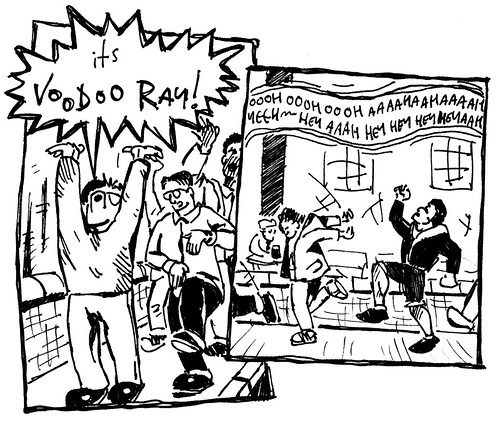
It’s worth remembering that Thatcher’s decimation of arts funding in the 80s – her tenure began with a 4.8% cut to Arts Council grants and ended with one of 2.9% – was consistent with the neoliberal fantasy that the cream would always rise to the top, whether it took the form of successful business enterprise or, in her estimations the pinnacle of musical achievement, Andrew Lloyd-Webber. Art and leisure were essentially the preserve of the middle classes, and anyone else could either pull themselves up by their britches or, you know, fuck off. As a result, Manchester found itself in a post-industrial nadir, and desperately in need of something worth believing in, something – to gingerly employ an over-used term – vital. If a former steel warehouse on the corner of Whitworth Street could spark that kind of devotion, anything was possible.
Acid house, meanwhile, was developing in the US via Chicago DJs; by 1987, the Shoom club had opened in London, and the movement was spreading across the UK. As Paul tells it, the Haçienda reached its peak across the summer of 1989. “It slowly got better and better,” he recalls, “and then it was the greatest place on the planet for us.” Acid itself had been kicking around the city for years, but it was the ecstasy explosion that tipped the balance. “All the bands were in place – me and Ste saw the Stone Roses in ’87, Happy Mondays were around, etc. It was only when ecstasy kicked in, that’s when Madchester really became big.”
At this point, Paul and Ste weren’t strangers to drugs, fanzines, or the Haçienda, but an opportunity to carve something meaningful at the intersection of all three now arose. “Me and Ste had been doing fanzines since the mid-80s really, nothing to do with drugs or music in particular,” Paul explains. “That’s how we met, picking up each other’s fanzines, and then we started writing to each other. So we did fanzines anyway. It was just fortuitous we were both at the Haçienda, and it seemed the most natural thing to do a fanzine for that.”
For Ste, at least, ecstasy was the catalyst that moved the idea for Freaky Dancing from 4am chatter to reality. “I think the idea must have come really early on, certainly when I started going,” he says. “It was probably within a couple of weeks of taking an E, going to the Haçienda, and then it was just, ‘Oh my god, this is amazing! We’ve got to do something!’ And our thing was drawing comics and making little magazines, so we thought: that’s what we’ve got to do. We’ve got to start one.”
Full of ideas for the new comic, Ste and Paul drew up the first 12-page issue within a week. Ste worked in an office next door to the Haçienda at the time, where the pair would let themselves in and proceed to photocopy 150 issues, ready for handing out later that Friday night. Friends were roped in to assist on folding and stapling duties, though many ended up contributing: “It was natural for us perhaps, but the weird thing was all our friends joining in, and strangers as well,” Ste says. “People started writing and drawing comics, giving us pages, diving in and helping out.” A couple of hours later, they were ready.
“It wasn’t as if we really thought about it, it was just like: ‘Right, go home, get a piece of paper…’ We didn’t have a big plan or vision of what it should be,” he goes on. “Things were just too good not to write about, not to draw.” And so the pair made their way round the queue snaking around outside the Haçienda, trying to hand out as many issues as possible without attracting too much attention from the door staff, who might not appreciate the drug content (“and there was a lot of drug content,” Paul laughs). They even slid a copy under the door of the DJ box, which eventually led to Mike Pickering giving a slightly nervous Paul a piece of his mind: he loved Freaky Dancing, and so did Tony Wilson, who wanted to meet him. The glory days were in session.
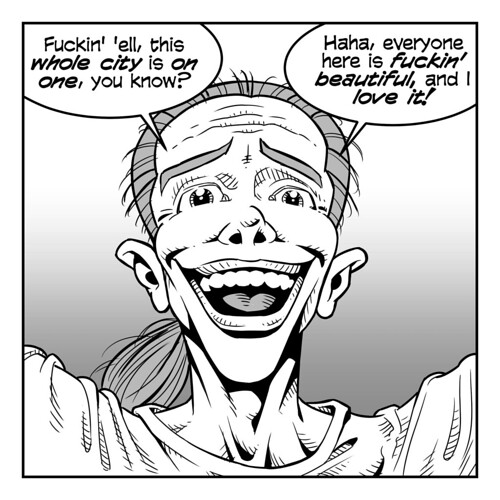
Flicking through the pages of Freaky Dancing today, part of what makes them so entertaining is the constant precipice being tread between pleasure and fear, depth and levity, clarity and pandemonium. As you’d expect, many of the stories revolved around adventures in ecstasy and the good times that came with it, but it’s not all saucer-eyed bliss – issue four, for example, was billed as a ‘bad trip special’. Looking back at the volumes now, maybe those narrative peaks and troughs weren’t entirely coincidental.
“I think the interesting thing for me is tracing the art from the first issue, when we’re all raw and idealistic, our first Es, rushing up, etc,” says Paul, audibly transported back for a moment, the kind of scenes lionised in Michael Winterbottom and Frank Cottrell Boyce’s 24 Hour Party People. “It’s all fantastic stuff. And then it sort of follows the arc of the Haçienda: towards the end, a lot of our comic strips are about paranoia, there are guns in them, and so on. We didn’t notice that at the time.” Ste picked up on it too: “We were absolutely unaware of that as we were producing it, but it seems really clear now when you look at it.”
Where did the dream die? By the time the final issue of Freaky Dancing was completed in July 1990, Ste admits the pair of them were simply “knackered”, having run the whole enterprise around full-time jobs and, of course, a pretty rigorous social life. “Also, it was costing us a fortune,” Paul recalls. But things were starting to change at the club, too. “We were going to the Haçienda less because by that point it was full of guns and things. It didn’t seem relevant anymore. It died a natural death, basically.”
I try to pin Paul down to a defining event, but as with the early days of acid house, he’s reluctant to sign off on such a reductive narrative. “Like all of these things, it wasn’t one night,” he tells me. “But I saw some really vicious fights. I remember going to a club round the corner – cos we always went somewhere afterwards, even if it was just my flat, to carry on – someone pulled out a gun and started shooting. It was inevitable really, with the amount of drugs and gangsters and money involved.” Neither of them had much interest in getting shot, it seems, and appearances at the club dwindled thereafter. Only Ste went back occasionally in the later years. “Towards the end,” he says, offering perhaps the saddest indictment, “it was just one more nightclub.”
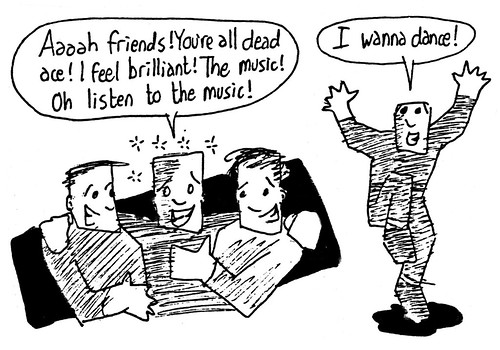
Decades passed before the idea of collecting Freaky Dancing’s 11 issues into a book came about; even then, time had a habit of running away from the pair. “It was Paul who wanted to do the book,” Ste says. “I wanted it left in the past a little bit. Part of it was that I was worried about going back and looking at it, and thinking it was awful. We were going to do it for the 25th anniversary, but that was something like four years ago…”
“Five years ago!” Paul chimes in. “It was John Doran from the Quietus who’s been quite the catalyst to get it all published properly. If it was just me and Ste we’d probably still be on it…”
John moved to Manchester in 1994, and retains one memorable first-hand encounter with the Haçienda; seeing The Chemical Brothers with the assistance of some pills that turned out to be ketamine. “It was a hectic scene in there with some well shady looking people, but it's probably a good way of summing up what Manchester was like at that time, just before the Arndale bomb went off – pretty grim and violent,” he recalls. “I always regretted not moving to Manchester earlier because I missed out on the real utopian years captured in Freaky Dancing. But I met a lot of the people who made the fanzine. Paul, especially, became a good friend.”
Why now, in 2019 – aside from being objectively excellent, of course – does the world need a Freaky Dancing book? For the Quietus editor, it’s much more than a nostalgia trip. “I don't expect a badge or a pat on the head, but I've spent my whole life really interested in underground, independent, DIY culture,” he tells me. “It's really part of my fabric now that I'm 47 – I bought my first fanzine in 1985 and wrote for a fanzine for the first time in 1986. And more recently, for the last decade or so, I've become more and more part of that ecology in a serious way myself – releasing records by other musicians, writing books for independent publishers, running an independent music website, putting out my own musical projects on vinyl or cassette, and you might as well add publishing books to that now as well.
“I'm a lot less likely to slam a DIY album now I understand the real struggle that goes into putting this stuff out. If I'm just some guy sat at a computer mouthing off, like an average BTL commentator, then what does my opinion really mean if I don't have any skin in the game?”
I’m curious to know what they all think about how fanzine culture has translated into the internet age. Ste sees “the same kind of impetus out there”, though naturally, the format has changed. “Perhaps it doesn’t translate into photocopied sheets of paper anymore. The same kind of ‘do it yourself’ attitude is still out there, though.” Paul agrees: “I mean you can do it online for nothing, as opposed to paying to print out 50 copies and getting them out into shops and clubs, which is a pain in the arse.”
John Doran certainly wants to see it happen. “I really hope some people half my age see it and do whatever the 2019 equivalent is… There are properly independent websites and fanzines that reflect culture as I see it out there, but there's no reason why someone reading this shouldn't start their own podcast or blog or fanzine or local clubnight etc. If you're sat there thinking, 'There's no point in me worrying about this because it's all outside of my budget', then something's gone wrong somewhere.”
If Ste and Paul made it happen on a shoestring budget with Freaky Dancing, you sense it wasn’t just a case of being in the right place at the right time. John recalls a hectic session out in Manchester with Paul and a few other mates one night many years ago, culminating in a messy Sunday lunchtime in the Bull, near Piccadilly Station. “He laid out his idea that all worthwhile cultural production came from a clinical and unflinching gaze at the minutiae of one’s own life, and that was whether we were talking about the American Splendor comics by Harvey Pekar, the poetry of Charles Bukowski, the films of Carol Morley, or the lyrics of the world’s greatest rock band, The Fall.” Eventually, the messiness got the better of them. “We had to leave the pub really quickly because he was nearly sick in a giant ornamental teapot, but the conversation has always stayed with me.”
Nothing stays the same, but the spirit lives on. If the Freaky Dancing anthology can be considered a time capsule of sorts, it’s one that evokes the DIY spirit of its creators as much as the music and culture pressed between all the paper and glue. “I think his point remains as valid now as it was 30 years ago when he and Ste were making Freaky Dancing - don't be a passive observer of other people's art when you can produce your own,” John says. “It's your preserve, not just 'theirs'. Own it.”
Freaky Dancing is out now via the Quietus. To purchase a copy please click here.





